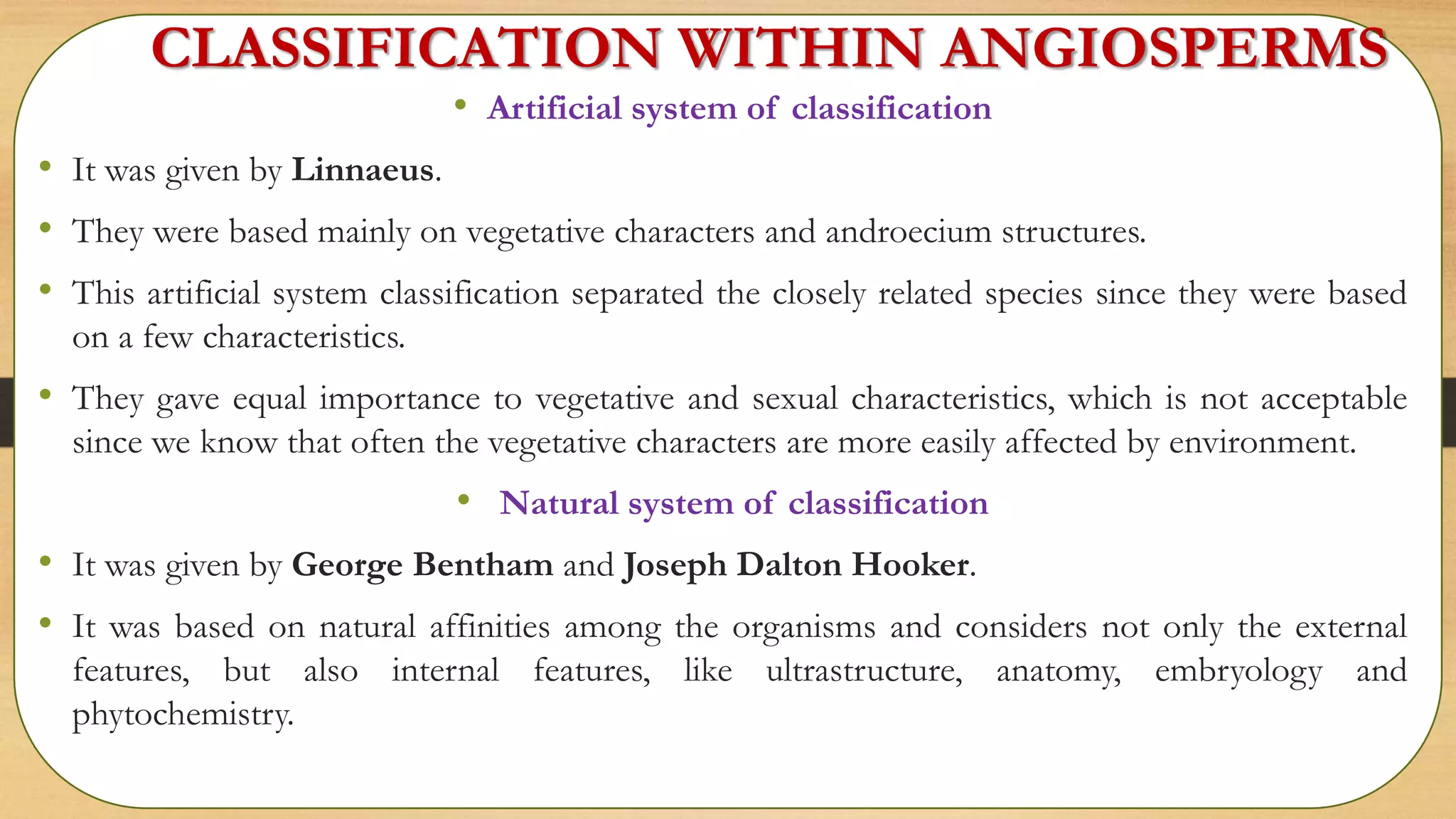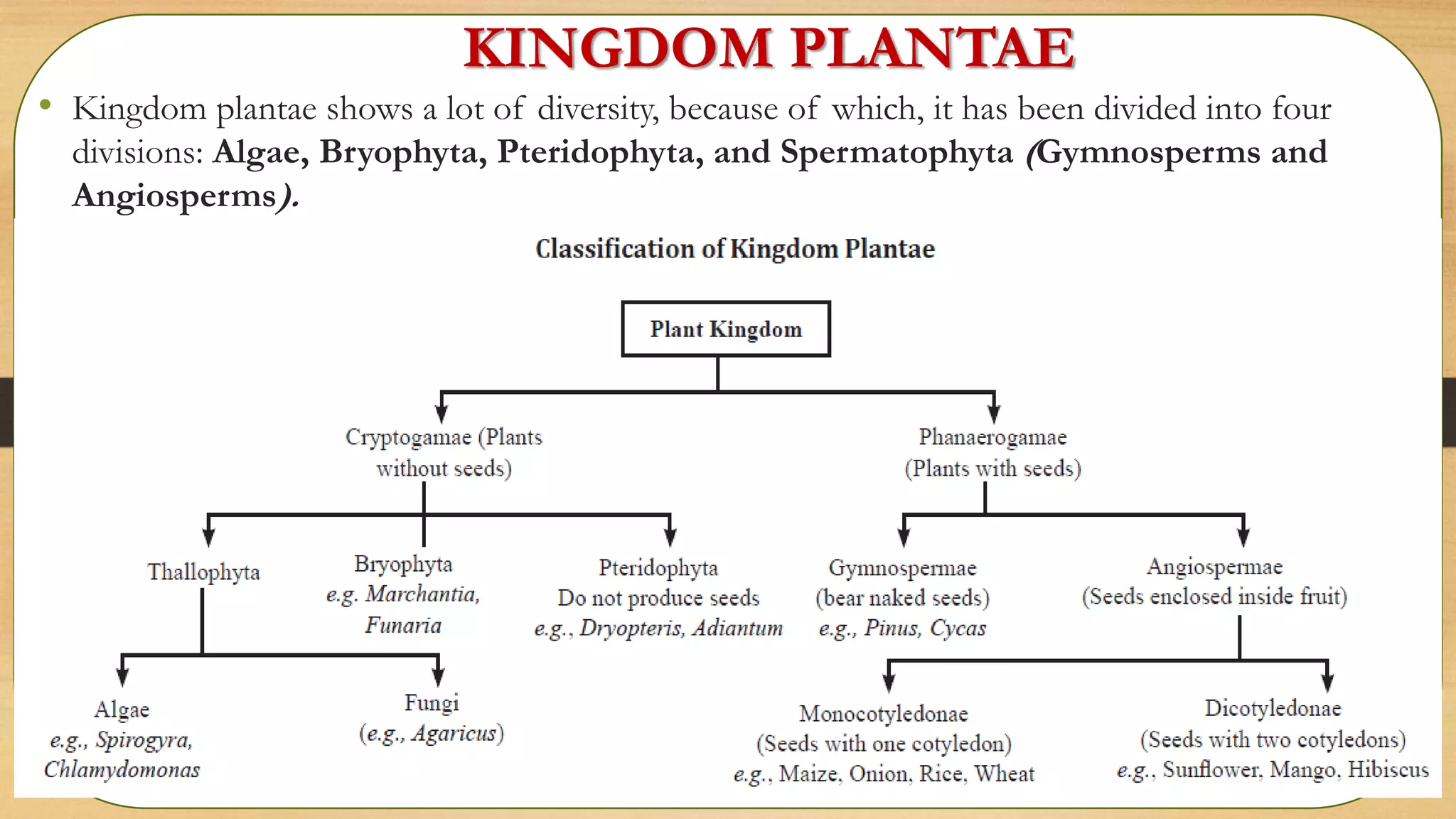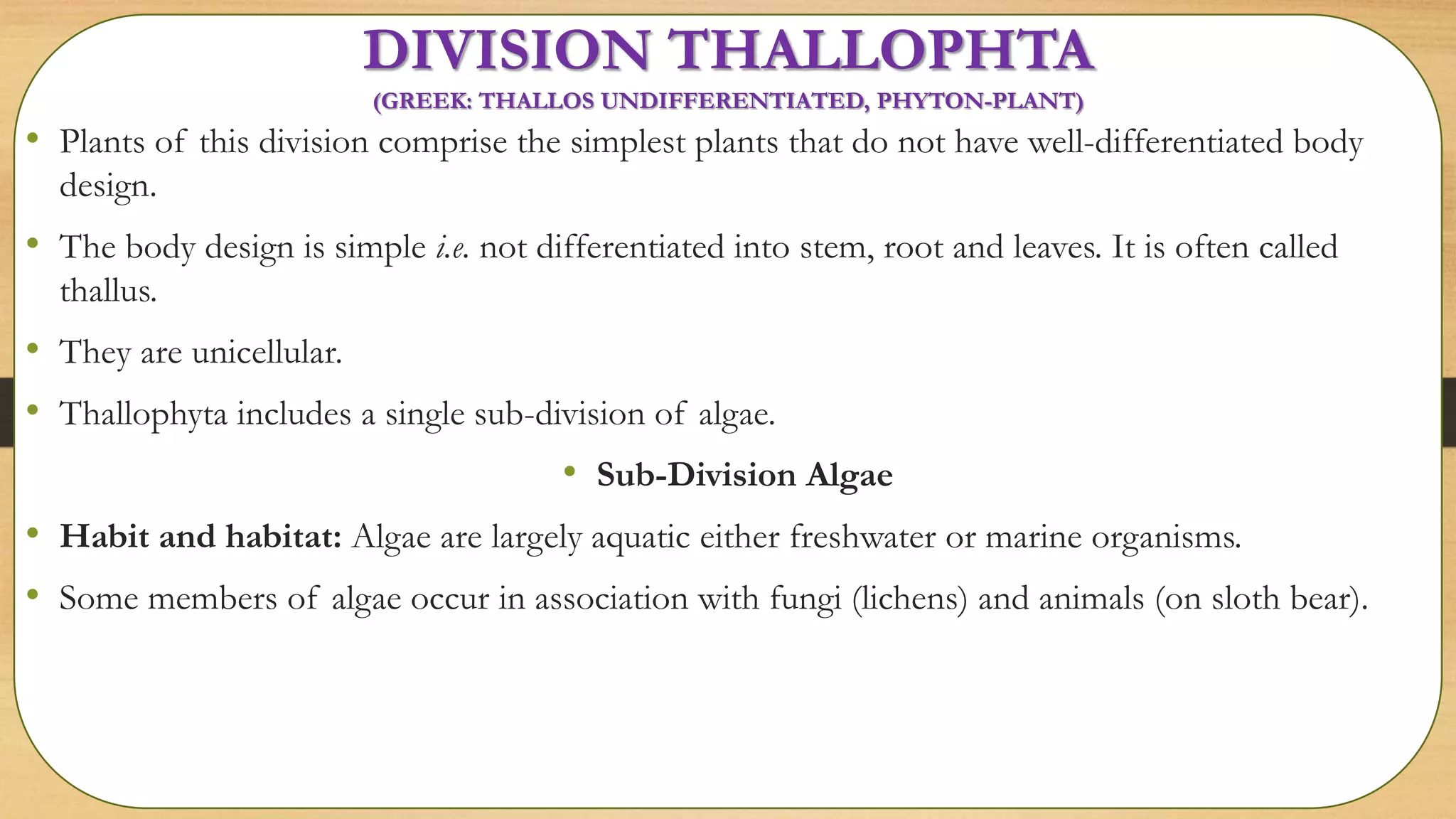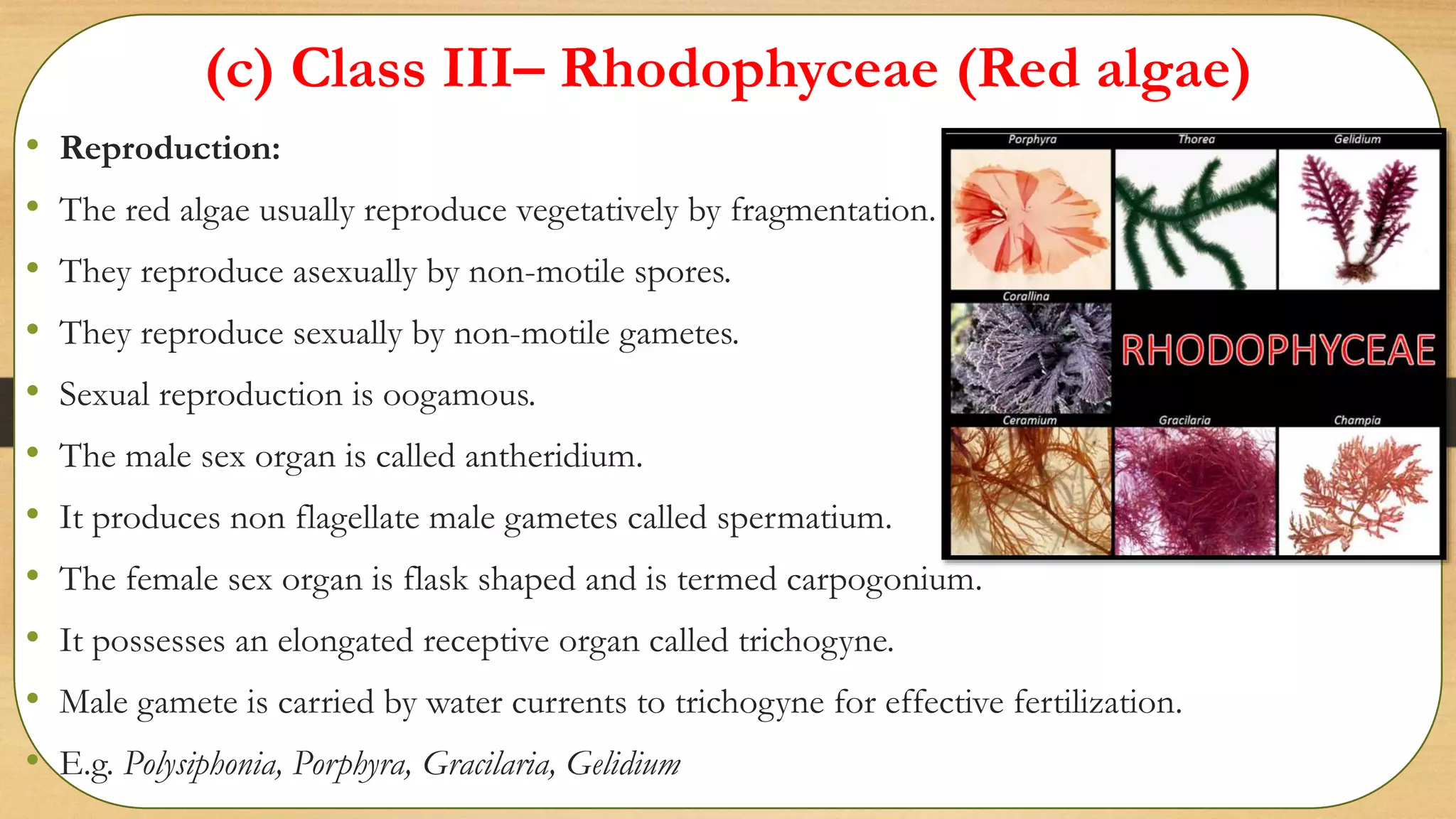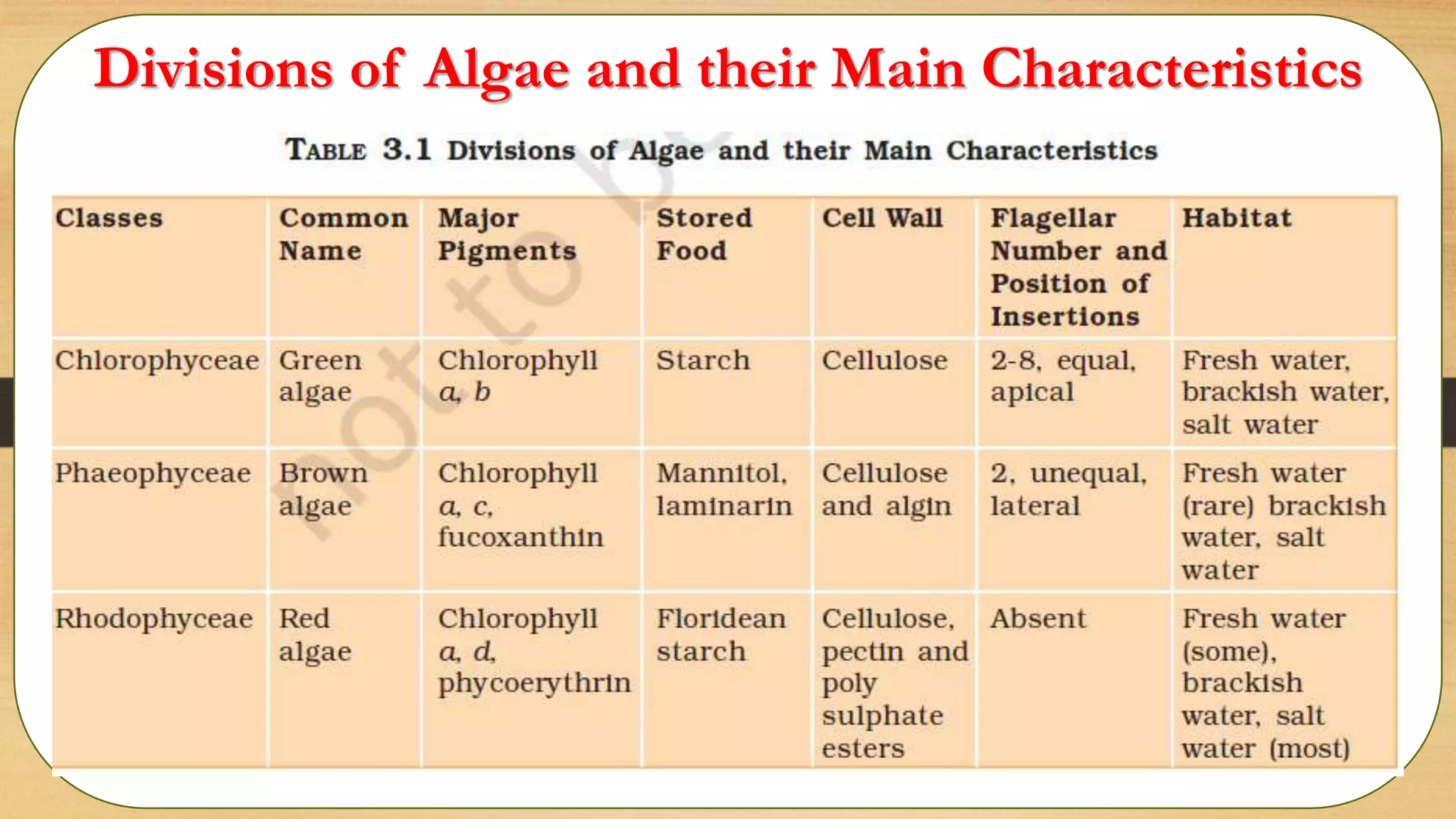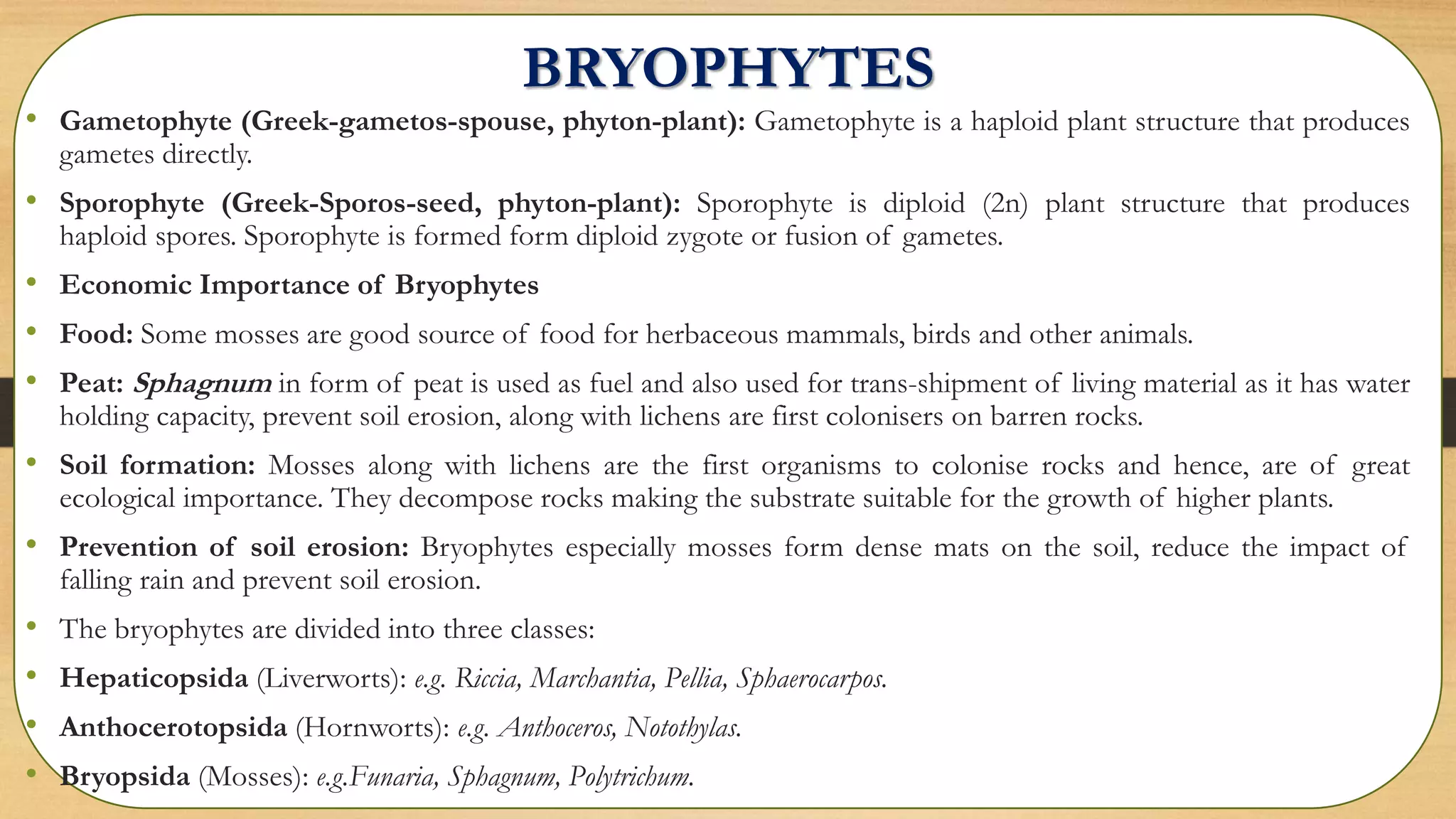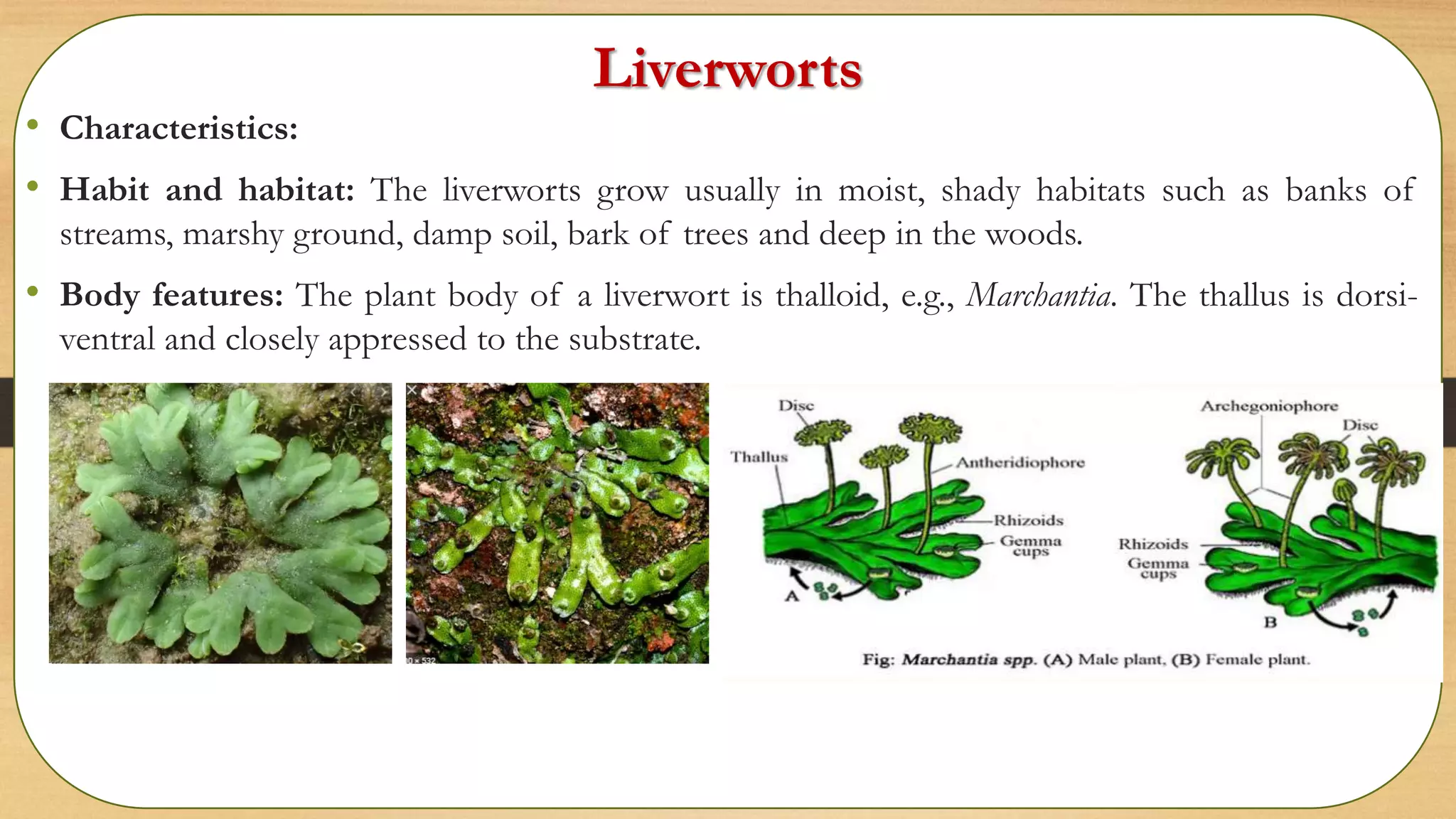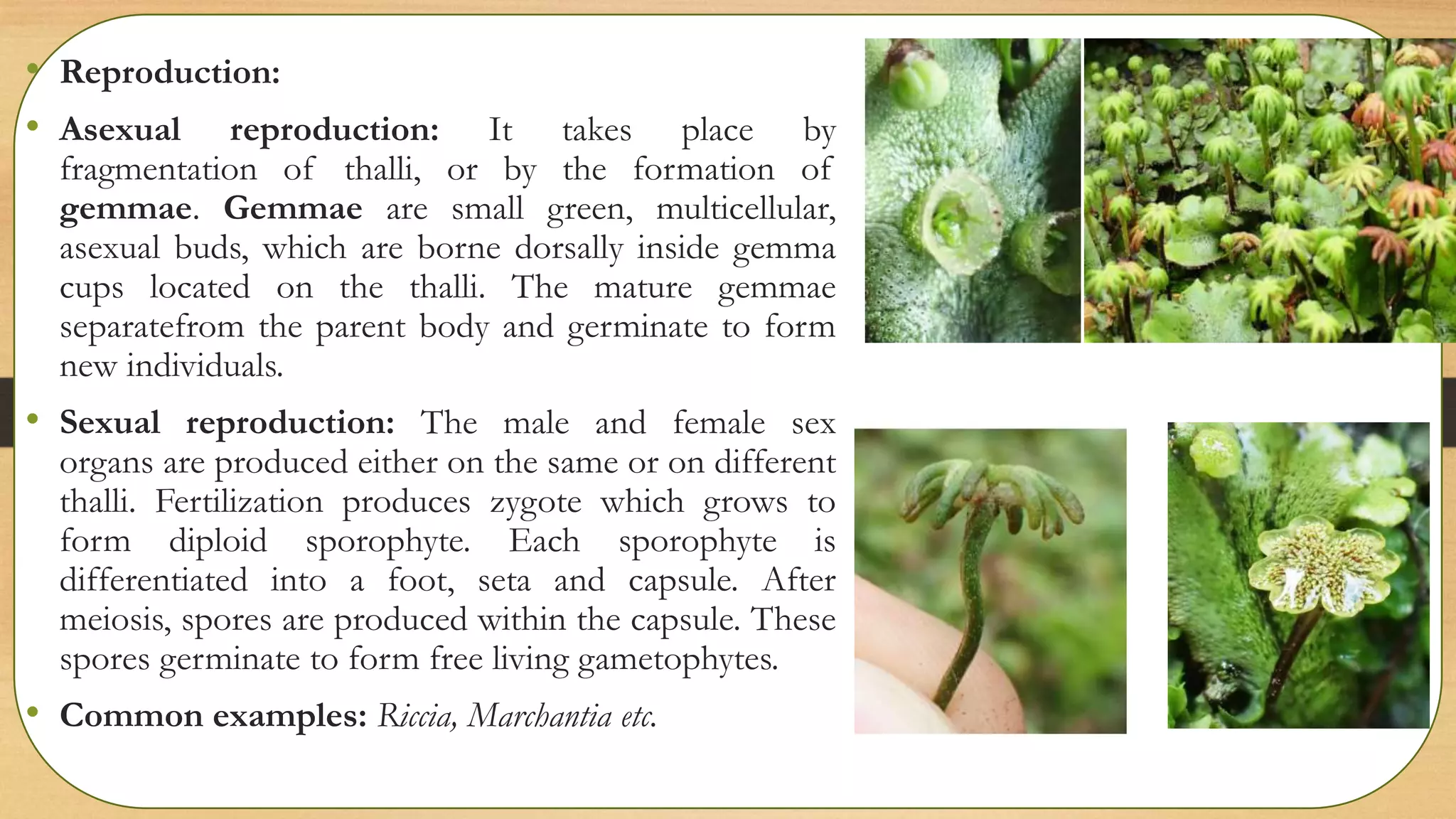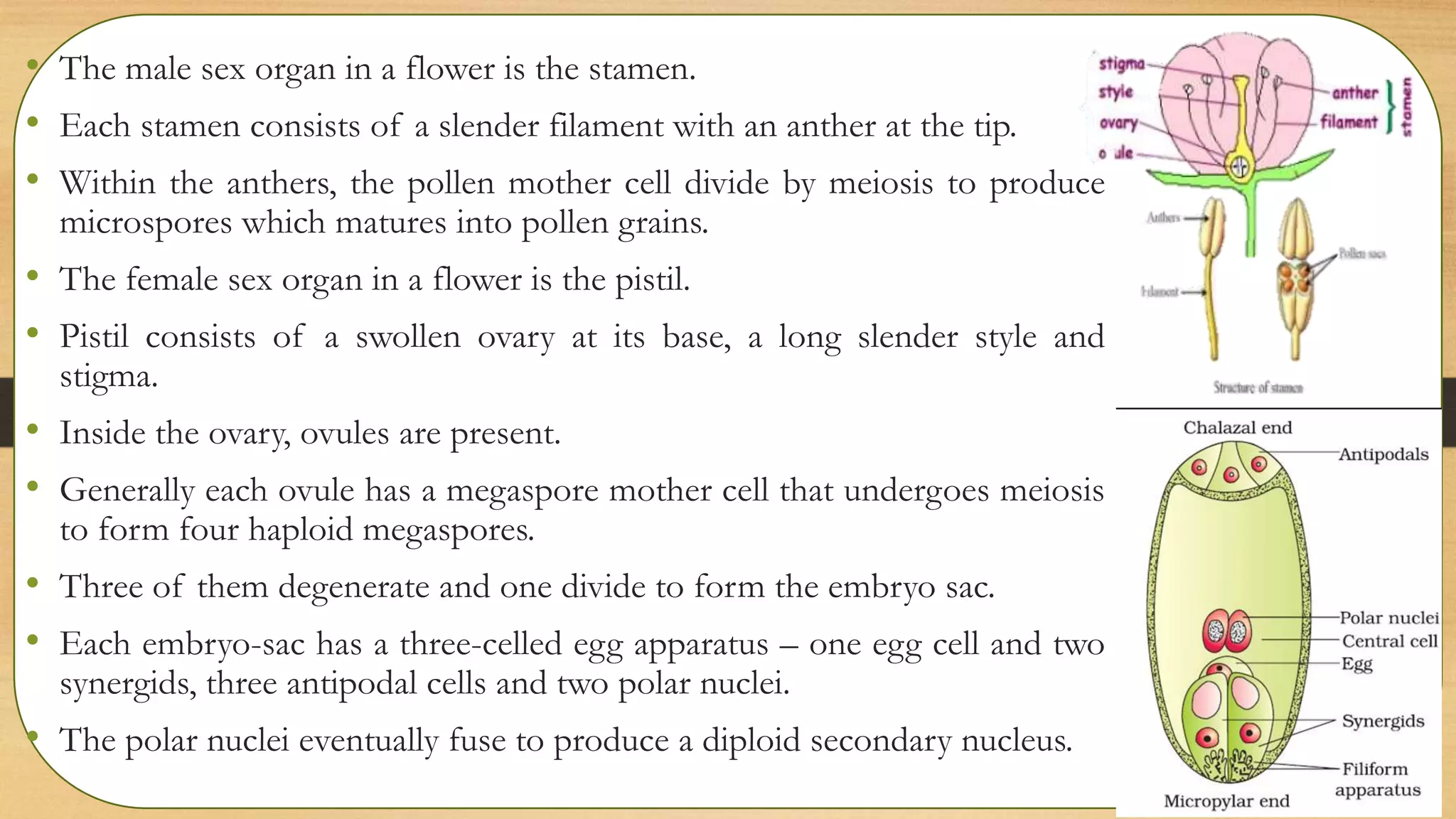The document summarizes key characteristics of the plant kingdom. It describes the four main divisions of the kingdom - algae, bryophyta, pteridophyta, and spermatophyta. It then focuses on describing the characteristics of algae in more detail, including their structures, pigments, reproduction processes, and major classes of chlorophyceae (green algae), phaeophyceae (brown algae), and rhodophyceae (red algae).


